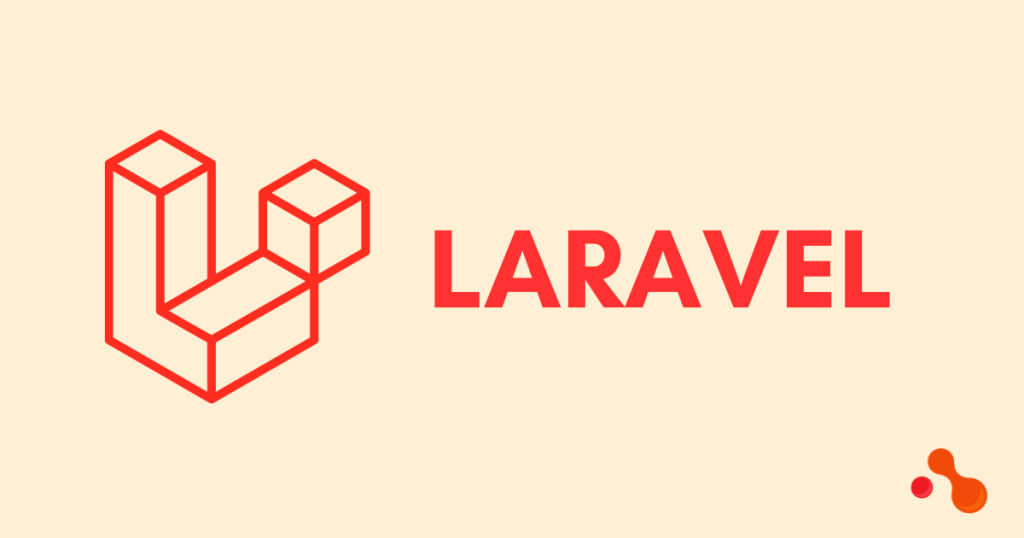Creating Interactive Dashboards with Laravel and Vue.js
The integration of Laravel and Vue.js opens up exciting possibilities for creating interactive dashboards that can revolutionize the way users interact with web applications.

Introduction
In the world of web development, Laravel has emerged as a popular and powerful PHP framework, known for its robustness and ease of use. Combining the strengths of Laravel with the dynamic capabilities of Vue.js, developers can create interactive dashboards that offer an exceptional user experience. This blog will take you on a journey through the process of building interactive dashboards with Laravel and Vue.js, exploring how these technologies work together seamlessly to provide an intuitive and efficient dashboard solution. Whether you're a seasoned developer or just starting, this blog will help you unlock the potential of Laravel and Vue.js for your web projects.
Setting up the Development Environment
To begin your Laravel development journey, you'll need to set up the development environment. Follow these steps:
A. Installing Laravel and Vue.js
- Install Laravel and Vue.js by using the Laravel Web Development Company's recommended setup.
- Laravel serves as the backend framework, while Vue.js acts as the frontend JavaScript framework.
B. Configuring the database and server requirements
- Ensure that your server meets the requirements specified by Laravel Development Services.
- Configure your database settings to enable seamless data storage and retrieval.
C. Creating a new Laravel project and integrating Vue.js
- Use Laravel's command-line interface to create a new project.
- Integrate Vue.js into your Laravel project for dynamic frontend interactions.
Building the Backend with Laravel
Now that you have the development environment set up, it's time to start building the backend using Laravel.
A. Setting up routes and controllers
- Define routes to map HTTP requests to specific controller methods.
- Controllers handle the logic for processing these requests.
B. Creating models and migrations for dashboard data
- Models represent database tables and define their relationships.
- Migrations create and modify the database schema for your models.
C. Implementing API endpoints for data retrieval
- Design API endpoints to fetch data from the database and respond with JSON.
- This allows your frontend (Vue.js) to fetch data from the backend.
D. Securing the API with authentication
- Implement authentication mechanisms like API tokens or OAuth to secure your API.
- This ensures that only authorized users can access sensitive data.
Designing the Dashboard UI with Vue.js
Designing a dashboard using Vue.js makes it easier to create a user-friendly and interactive interface. Here's how you can do it:
A. Setting up Vue components and templates:
- Vue.js allows you to create reusable components for different parts of the dashboard.
- Components are like building blocks that can be combined to form the complete dashboard layout.
- Templates define how the components are structured and displayed on the page.
B. Integrating Bootstrap or other CSS frameworks for styling:
- Bootstrap is a popular CSS framework that helps make your dashboard look visually appealing.
- You can also use other CSS frameworks based on your preferences and requirements.
- These frameworks provide pre-designed styles and responsive features for your dashboard.
C. Creating a modular and responsive dashboard layout:
- A modular design ensures that each part of the dashboard can be developed and maintained independently.
- Responsiveness ensures that the dashboard adapts well to different screen sizes, making it usable on various devices.
D. Implementing data visualization using chart libraries (e.g., Chart.js):
- Data visualization is crucial for presenting information in a graphical format.
- Chart libraries like Chart.js can help you create various charts, graphs, and diagrams for displaying data.
- These visual elements make the dashboard more intuitive and informative.
Fetching and Displaying Data in Real-time
Fetching and displaying real-time data enhances the usefulness of the dashboard. Here's how to achieve it:
A. Utilizing Laravel's Eloquent ORM to fetch data:
- Laravel is a powerful PHP framework, and Eloquent ORM simplifies database operations.
- You can use Eloquent to fetch data from the database and send it to the Vue.js components.
B. Implementing AJAX requests with Axios in Vue.js:
- AJAX allows you to update parts of the dashboard without reloading the entire page.
- Axios is a JavaScript library that simplifies AJAX requests.
- Use it to fetch data from the server asynchronously and update the dashboard in real-time.
C. Updating dashboard components dynamically:
- With real-time data from AJAX requests, you can dynamically update the dashboard components.
- For example, you can display live statistics, notifications, or charts that change as new data arrives.
Adding Interactive Features
Task scheduling is an essential aspect of Laravel development that helps automate repetitive tasks, increase efficiency, and improve overall productivity. To make the most out of task scheduling, here are some easy-to-understand tips and best practices, along with common pitfalls to avoid:
A. Best Practices for Efficient Task Scheduling in Laravel:
1. Use Laravel's Task Scheduler: Laravel provides a built-in task scheduler that allows you to define and manage scheduled tasks easily. Utilize this feature to schedule tasks like database cleanup, sending emails, or generating reports.
2. Cron Job Setup: Ensure that the cron job is set up correctly on your server to run Laravel's scheduler at regular intervals. This is essential for automating tasks as per your defined schedule.
3. Clear Task Logic: Keep the logic of your scheduled tasks separate and well-organized. Avoid putting complex business logic within the scheduled task closures to maintain code readability.
4. Task Frequency: Determine the appropriate frequency for your scheduled tasks. Some tasks may require hourly execution, while others might run daily, weekly, or monthly, depending on their nature and importance.
5. Error Handling: Implement robust error handling to manage unexpected issues. Laravel provides mechanisms like task retries and notifications, which can help you stay informed about task failures.
B. Avoiding Common Pitfalls and Mistakes:
1. Overloading the Scheduler: Avoid scheduling too many tasks too frequently, especially if they are resource-intensive. This can strain your server and lead to performance problems.
2. Not Monitoring Scheduled Tasks: Regularly monitor the performance of your scheduled tasks. Sometimes, tasks might fail silently, leading to unnoticed issues.
3. Lack of Logging and Reporting: Ensure that you log the output and errors of your scheduled tasks. This will aid in troubleshooting and identifying potential problems.
4. Skipping Task Overlaps: By default, Laravel prevents the same task from overlapping. However, if your task takes longer to execute than its frequency, consider adding additional logic to handle overlapping situations effectively.
5. Ignoring Timezone Differences: Take timezones into account when scheduling tasks that involve users from different regions. This will prevent confusion and ensure tasks are executed at the intended times.
Deployment and Security
When it comes to deploying and securing your Laravel application, there are important steps you should follow to ensure optimal performance, data security, and protection against common attacks. Here's a user-friendly guide to help you navigate through the process:
A. Preparing the application for production
1. Optimize Code: Review and optimize your Laravel code for efficiency.
2. Database Setup: Configure your application to use the appropriate database (e.g., MySQL, PostgreSQL).
3. Environment Configuration: Set up your environment variables to match the production server.
4. Debug Mode Off: Disable debug mode to prevent sensitive information leaks.
5. Asset Compilation: Compile and minify your assets for faster loading.
6. Clear Caches: Remove development-related caches and enable appropriate production caching.
B. Configuring the server for optimal performance
1. Choose Reliable Hosting: Select a hosting provider that offers good performance and security features.
2. Server Requirements: Ensure your server meets the necessary requirements for running Laravel smoothly.
3. Web Server Configuration: Use Nginx or Apache and configure them to handle Laravel applications.
4. PHP Configuration: Adjust PHP settings for better performance and security.
C. Ensuring data security and protection against common attacks
1. Validation: Validate user input to prevent malicious data from entering the system.
2. Authentication: Implement Laravel's built-in authentication system for secure user access.
3. Authorization: Control user permissions and access to sensitive parts of the application.
4. Encryption: Use encryption for sensitive data like passwords and credit card information.
5. Secure HTTPS: Enable HTTPS to encrypt data in transit and protect user privacy.
6. CSRF Protection: Enable Cross-Site Request Forgery (CSRF) protection.
7. XSS Prevention: Protect against Cross-Site Scripting (XSS) attacks.
8. SQL Injection Prevention: Sanitize and validate database queries to prevent SQL injection.
D. Regular updates and maintenance best practices
1. Update Laravel: Keep your Laravel version up-to-date to get the latest security patches and features.
2. Dependency Updates: Regularly update third-party packages used in your application.
3. Backups: Set up regular backups to ensure data recovery in case of a disaster.
4. Monitoring: Monitor your application and server for performance and security issues.
5. Error Handling: Implement a robust error handling mechanism to handle unexpected issues gracefully.
Conclusion
In conclusion, the integration of Laravel and Vue.js opens up exciting possibilities for creating interactive dashboards that can revolutionize the way users interact with web applications. The powerful features and ease of use of Laravel, combined with the reactive nature of Vue.js, provide developers with a robust foundation to build user-friendly and efficient dashboard solutions. By leveraging the capabilities of these technologies, Laravel development companies and web developers can deliver top-notch services to clients, resulting in cutting-edge web applications. Embrace the power of Laravel and Vue.js to take your web development projects to new heights and stay ahead in the competitive digital landscape.
About the Creator
Mukesh Ram
I founded Acquaint Softtech Private Limited with a vision to make quality developers affordable to everyone. With my blood, sweat, and tears I haven’t just been able to sustain but thrive over the years.






Comments
Mukesh Ram is not accepting comments at the moment
Want to show your support? Send them a one-off tip.